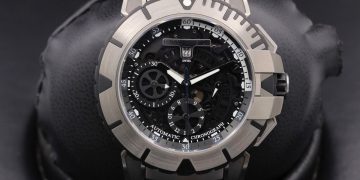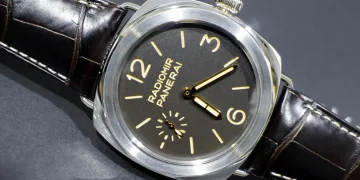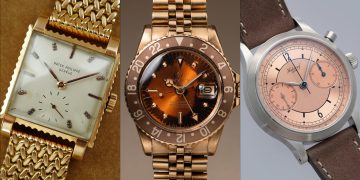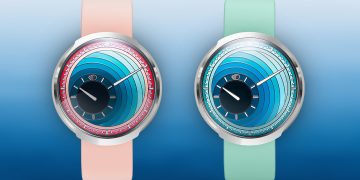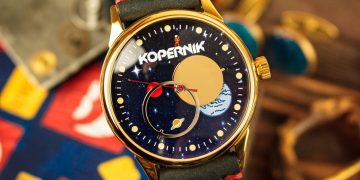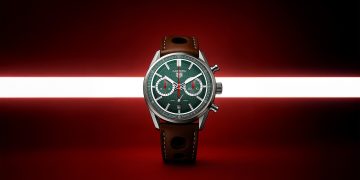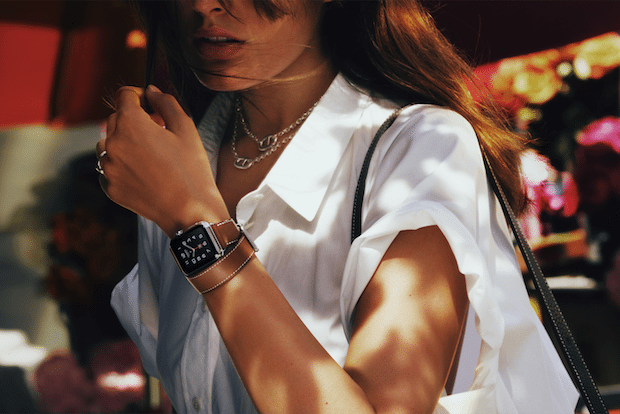Introduction: The Rise of Wearable Technology and the Big Players
The world of wearable technology has seen a monumental shift in the past decade, driven by innovations from global tech giants. Among the most influential players are Apple and Garmin, two companies that have shaped the wearable tech landscape in dramatically different ways. Apple, with its unmatched ecosystem, has revolutionized the smartwatch category through the Apple Watch. On the other hand, Garmin, a pioneer in GPS and fitness technology, has built a loyal following by focusing on rugged, performance-oriented wearables.
In this article, we will delve deep into the histories and evolutions of both Apple Watch and Garmin, exploring the stories behind each company’s origins, their brand philosophies, and how they have navigated their respective paths to becoming household names in the wearable tech world. By comparing their approaches to innovation, product development, and market positioning, we will see how Apple and Garmin cater to different audiences while still influencing the larger tech landscape.
1. The Origins of Apple Watch and Garmin
a. Apple: The Beginning of a Revolutionary Ecosystem
- Founding of Apple: Apple Inc. was founded in 1976 by Steve Jobs, Steve Wozniak, and Ronald Wayne. Initially focused on personal computers, Apple soon revolutionized the world with its innovative designs and user-friendly interfaces. Apple’s hallmark has always been its commitment to design and integration—two key principles that would later shape the Apple Watch.
- Entry into Wearables: Apple’s venture into wearables began with the iPod, which fundamentally changed how people consumed music. Building on its success, Apple introduced the iPhone in 2007, creating a smartphone revolution. However, despite dominating the smartphone market, Apple saw an opportunity to innovate further and enter the wearable tech space.
- Apple Watch Launch (2015): The Apple Watch was announced in 2015, with the goal of integrating the iPhone’s functionality into a compact, wearable format. Apple’s strategy was to offer a seamless integration with its existing ecosystem, positioning the Apple Watch not only as a smartwatch but as an accessory that enhanced the overall Apple experience. With its premium build, luxury options, and strong focus on health tracking, the Apple Watch was set to become a flagship wearable.
b. Garmin: The Pioneering GPS Company
- Founding of Garmin: Garmin was founded in 1989 by Gary Burrell and Min Kao with a focus on creating GPS navigation systems. Garmin initially served the aviation, marine, and automotive markets, quickly becoming a leader in global positioning systems (GPS) technology.
- Transition to Wearables: Garmin made its transition into wearables with its focus on fitness and outdoor navigation. In 2003, Garmin introduced the Forerunner 101, one of the first GPS-enabled fitness watches for runners. This early success laid the foundation for Garmin’s evolution into the smartwatch and fitness tracking market, distinguishing itself as a company with a deep commitment to precision and performance.
- Garmin’s Growth in Wearables: While the Apple Watch marked Apple’s entry into the market, Garmin had already spent years building a reputation for its high-quality fitness devices. Over the years, Garmin has expanded its offerings with the Fenix, Forerunner, and Instinct series, creating a line of watches designed for athletes, outdoor adventurers, and fitness enthusiasts.
2. Evolution of the Apple Watch and Garmin
a. Apple Watch: From Luxurious Accessory to Fitness Powerhouse
- Initial Launch and Reception: The first Apple Watch model was initially marketed as a premium fashion accessory and tech gadget. The device was offered in various materials, from aluminum and stainless steel to the high-end Apple Watch Edition, which featured 18-karat gold. The first model also emphasized health and fitness tracking features such as heart rate monitoring, step tracking, and activity rings.
- Expanding Functionality and Features: As each subsequent model was released, Apple began to refine the Apple Watch’s functionalities. Features such as GPS, cellular connectivity, ECG monitoring, sleep tracking, and fall detection were added. The focus shifted from merely being a smart accessory to a health and wellness tool. The integration with Apple Fitness+, launched in 2020, allowed users to access fitness classes and track workouts directly on their Apple Watches.
- Apple Watch Series 7 and Beyond: The Apple Watch Series 7 introduced a larger display, faster charging, and even better durability. The Apple Watch Ultra was released in 2022, designed for extreme athletes and adventurers, with features like dual-frequency GPS and a tougher titanium casing.
b. Garmin: From GPS Pioneers to Wearable Fitness Leaders
- Early Forerunner Series: Garmin’s initial wearables, like the Forerunner 101, were primarily focused on GPS and fitness tracking. Over the years, Garmin continued to iterate on these models, refining accuracy, battery life, and user experience. Garmin quickly became a leader in the sports and outdoor adventure categories, thanks to its precise GPS technology and rugged build quality.
- Fenix Series and Expansion: The launch of the Garmin Fenix series marked a significant shift in Garmin’s wearables. The Fenix series was designed for multi-sport athletes, including triathletes, runners, cyclists, and mountain climbers. The Fenix also became known for its ruggedness, long battery life, and advanced tracking features. With this, Garmin carved out a niche as the preferred brand for those serious about outdoor fitness and adventure sports.
- Recent Innovations and Diversification: Garmin has continued to innovate with products like the Garmin Venu and Instinct Solar, incorporating advanced sensors, solar charging, and smartwatch features into its traditionally performance-oriented models. Garmin’s wearables are now widely used in running, cycling, swimming, and triathlon, as well as for navigation and backcountry exploration.
3. Brand Philosophy: Apple vs. Garmin
a. Apple: Innovation, Integration, and Luxury
- Design Philosophy: Apple has always been synonymous with sleek, minimalist design. The Apple Watch reflects this ethos, with its premium materials and emphasis on fashion and user-friendly interfaces. For Apple, wearables are not just functional devices—they are status symbols and lifestyle enhancers.
- Ecosystem Integration: One of Apple’s greatest strengths is its ability to integrate the Apple Watch into the larger Apple ecosystem. The device works seamlessly with the iPhone, Mac, iPad, and AirPods, offering a cohesive user experience. Apple has made the Apple Watch a part of its broader health and fitness ecosystem, which includes Apple Health, Fitness+, and more.
b. Garmin: Precision, Ruggedness, and Performance
- Brand Positioning: Garmin has built its brand around the idea of precision and rugged performance. Unlike Apple, Garmin does not prioritize luxury or fashion in the same way, but rather emphasizes functional durability and advanced tracking capabilities. Garmin products are designed with athletes and outdoor enthusiasts in mind, offering features that support a wide range of sports and activities.
- Rugged Durability: Garmin’s products are built to withstand extreme conditions, from swimming in cold water to mountain climbing in harsh environments. The brand has earned a reputation for creating devices that survive under the toughest conditions.

4. Target Audiences: Apple Watch vs. Garmin
a. Apple Watch: The All-in-One Smart Accessory
- Target Audience: Apple Watch targets tech-savvy consumers, fashion-conscious individuals, and those already embedded in the Apple ecosystem. It’s designed for users who value elegance, functionality, and health tracking features. Apple Watch users are often looking for a combination of style, fitness, and productivity all in one device.
- Market Appeal: The Apple Watch appeals to a broader market, from casual fitness enthusiasts to professionals who use the device to manage notifications, calls, and work tasks.
b. Garmin: Performance-Driven, Outdoor Enthusiasts
- Target Audience: Garmin primarily targets athletes, runners, cyclists, swimmers, mountaineers, and outdoor adventure seekers. Its watches are designed for those who require precise data and rugged durability to support their performance needs. Garmin users tend to prioritize fitness accuracy and battery life over fashion or style.
- Market Appeal: Garmin’s audience is more specialized, appealing to those with a serious interest in sports or outdoor exploration. While the Apple Watch has a broad appeal, Garmin has firmly entrenched itself within the niche market of performance-driven users.
5. Key Innovations: Apple Watch vs. Garmin
a. Apple Watch Innovations
- Health Tracking: Apple’s focus on health has led to groundbreaking features like the ECG monitor, fall detection, blood oxygen monitoring, and sleep tracking.
- Fitness Integration: The introduction of Fitness+ and Apple Health has made the Apple Watch a comprehensive fitness device that tracks everything from basic activity levels to advanced metrics such as VO2 Max and mindfulness.
- Smart Features: Apple Watch has integrated Siri, iMessage, and Apple Pay for a true smartwatch experience.
b. Garmin Innovations
- GPS Accuracy: Garmin is known for its exceptional GPS tracking and navigation capabilities, making it the go-to choice for outdoor adventures.
- Solar Charging: Garmin introduced solar charging for select models like the Instinct Solar, extending battery life during outdoor excursions.
- Advanced Fitness Metrics: Garmin watches provide advanced metrics like VO2 Max, Body Battery, and Training Load, giving athletes and adventurers deep insights into their performance.
6. Conclusion: Apple Watch vs. Garmin – Different Paths to Dominance in Wearables
In conclusion, both Apple Watch and Garmin have carved out their own distinct identities in the wearable tech market. Apple, with its focus on style, integration, and ecosystem, appeals to a broad market looking for a versatile, high-tech device. Garmin, on the other hand, has built its legacy on precision, ruggedness, and fitness-focused features, establishing itself as the choice for serious athletes and outdoor enthusiasts.
While Apple Watch has become a symbol of luxury and smart living, Garmin remains the go-to brand for users who need durability and advanced performance metrics. The key to both brands’ success lies in their ability to understand and cater to their respective audiences—Apple Watch thrives on integration and luxury, while Garmin succeeds by delivering rugged reliability and fitness precision.



